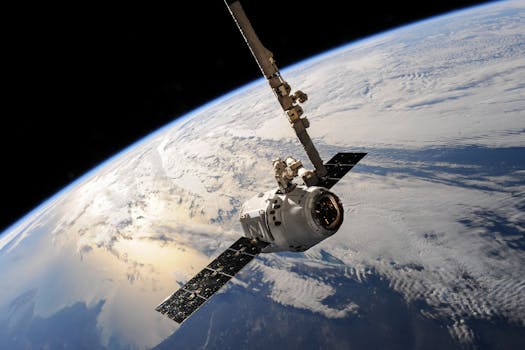The Future of Satellites: Revolutionizing Global Connectivity
The future of satellites is transforming the way we communicate, navigate, and understand our planet. With advancements in space technology, satellites are becoming more powerful, efficient, and accessible, enabling new applications and services that are revolutionizing global connectivity.

The Future of Satellites: Revolutionizing Global Connectivity
The Future of Satellites is revolutionizing the way we communicate, navigate, and understand our planet. With advancements in space technology, satellites are becoming more powerful, efficient, and accessible, enabling new applications and services that are transforming global connectivity. The future of satellites is expected to be shaped by several key trends, including the increasing use of small satellites, the development of new satellite constellations, and the growing demand for satellite-based services such as broadband internet and Earth observation.
Satellites have been a crucial part of our daily lives for decades, providing us with navigation, communication, and weather forecasting services. However, the future of satellites holds much more promise, with the potential to connect the unconnected, monitor the environment, and enable new scientific discoveries. The increasing use of small satellites, also known as CubeSats, is one of the key trends shaping the future of satellites. These tiny satellites are smaller, cheaper, and more efficient than traditional satellites, making them an attractive option for startups, researchers, and governments.
Advancements in Space Technology
Advances in space technology are driving the development of new satellite systems and applications. One of the most significant advancements is the development of reusable rockets, which are reducing the cost of launching satellites into space. This has made it possible for companies like SpaceX and Blue Origin to launch numerous satellites into space, enabling the creation of large constellations that can provide global coverage. Another significant advancement is the development of advanced propulsion systems, such as electric propulsion, which are more efficient and longer-lasting than traditional propulsion systems.
The development of new materials and manufacturing techniques is also transforming the satellite industry. The use of advanced materials like carbon fiber and 3D printing is enabling the creation of lighter, stronger, and more efficient satellites. This is reducing the cost of launching satellites into space and enabling the development of more complex and capable satellite systems. The growing demand for satellite-based services is also driving the development of new satellite constellations and applications.
Applications and Services
The future of satellites is enabling a wide range of new applications and services, including broadband internet, Earth observation, and navigation. One of the most significant applications is the provision of broadband internet services to underserved communities. Companies like SpaceX and OneWeb are launching large constellations of satellites to provide global internet coverage, enabling people in remote and rural areas to access the internet and connect with the rest of the world.
Earth observation is another significant application of satellites, enabling us to monitor the environment, track climate change, and predict natural disasters. Satellites are providing us with valuable insights into the health of our planet, enabling us to make more informed decisions about how to protect and preserve it. Navigation is also a critical application of satellites, enabling us to navigate our way around the world with precision and accuracy.
Challenges and Opportunities
Despite the many opportunities presented by the future of satellites, there are also several challenges that need to be addressed. One of the most significant challenges is the growing problem of space debris, which is threatening the safety and sustainability of satellite operations. The increasing use of small satellites and the development of new satellite constellations are also creating new challenges for regulatory bodies and industry stakeholders.
However, these challenges also present opportunities for innovation and growth. The development of new technologies and services is creating new opportunities for startups, researchers, and governments to participate in the satellite industry. The growing demand for satellite-based services is also driving the development of new applications and business models, enabling companies to create new revenue streams and expand their customer base.